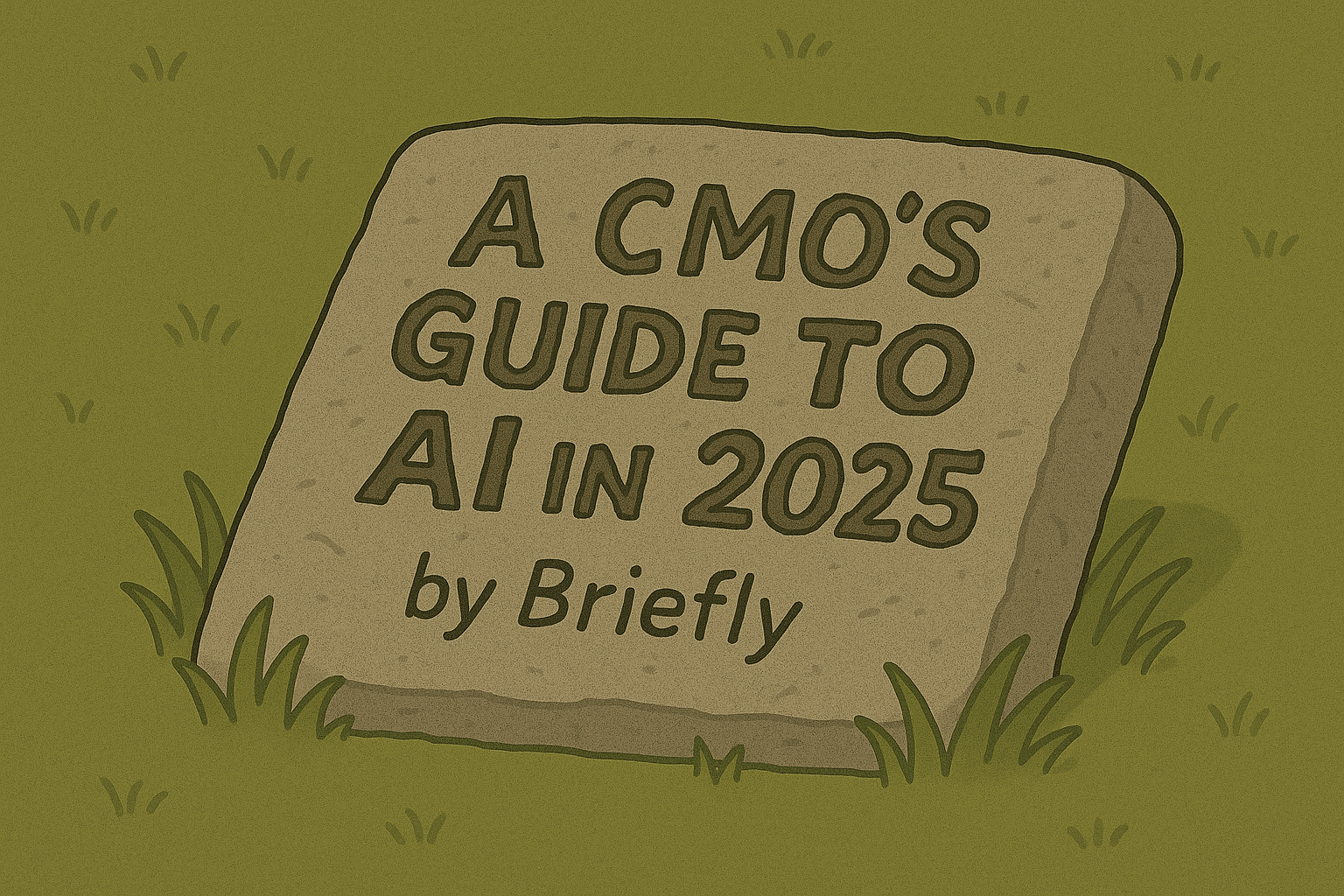Between frantic texts from your CEO asking "What's our AI strategy?", LinkedIn hype-posts and meaningful technical progress, AI vertigo is a common symptom for the modern CMO.
This guide is designed to be a simple, thoughtful and practical look at where AI is today, where it's headed and what that means for your marketing function.
Reading it should not only help you sound clued up in your next Board meeting, but also have a first-principles understanding of where the technology is heading so that you can plan for and implement AI at scale in the coming years.
Where is AI today?
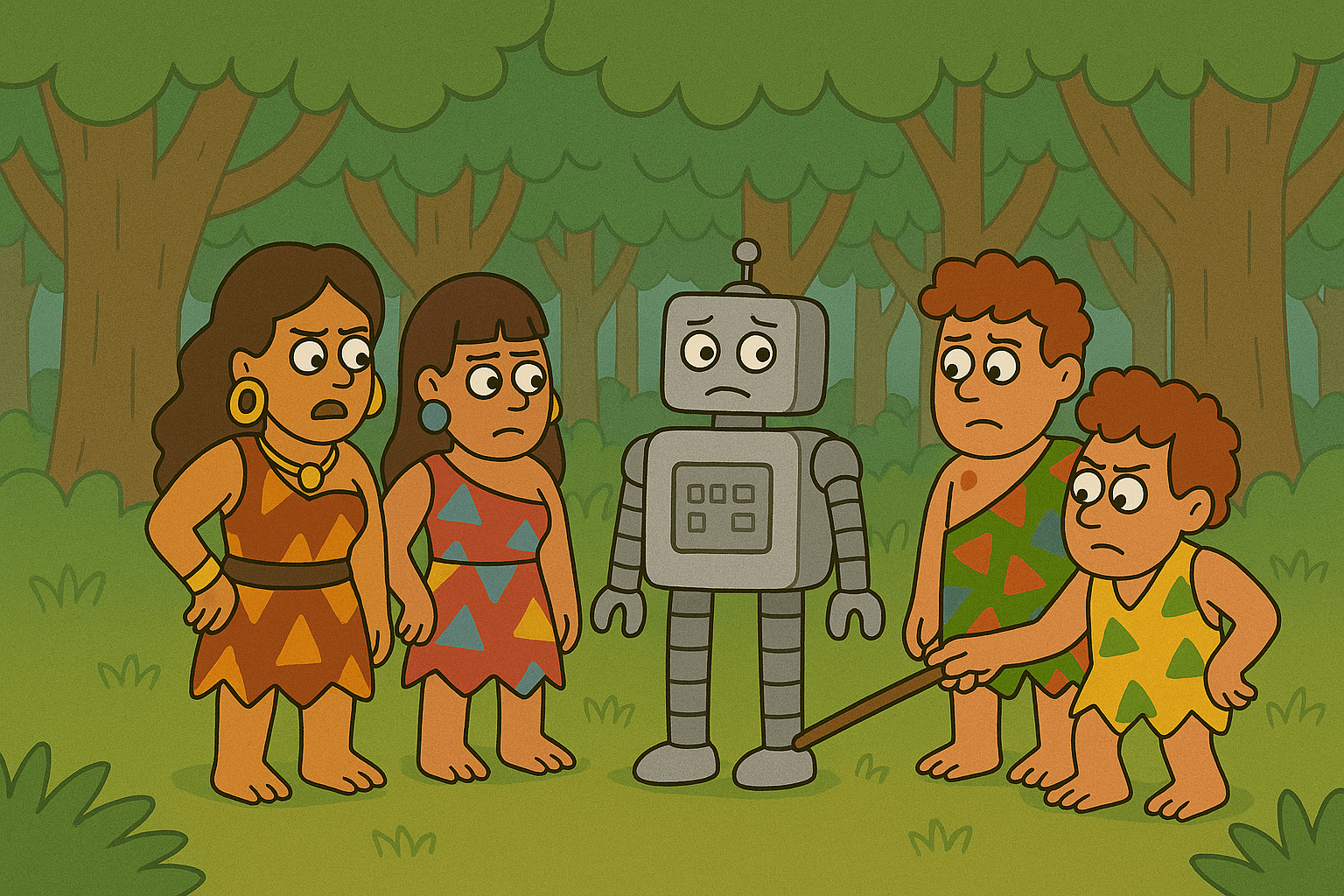
Behind the hype, AI has actually made rapid progress over the last couple of years. The general trend is that AI is getting faster, cheaper and more capable. More capable models are better at reasoning, and can operate more autonomously for longer periods of time. Meanwhile, speed and cost improvements are unlocking new use-cases which would not have previously been viable (like real-time audio conversations or sufficiently cheap models for triaging customer support requests).
At the same time, if you have touched LinkedIn recently, or Twitter at any point in the last year, you'll have heard about the rise of AI agents. While agents are still relatively new, it's important that you understand how they work and how they're different from the AI systems you might already be using. We reckon it's a safe bet that agents will be the most common way that organisations will use AI in the coming years.
What are AI agents?
AI agents are systems that have far more autonomy, or agency, than the 'traditional' AI models you're using today. Rather than simply responding to prompts, they can plan, execute multi-step tasks, and adapt to changing circumstances.
Why does this matter? Imagine one of your marketers wanted to find the best performing social ad for your brand, and create a few variants of it to directly target your 5 nearest competitors' audience segments. That's a lot of work, happening across at least 3 different platforms.
Asking a chatbot to do this won't get you very far. Instead, you'll need to provide tools to the AI to allow it to complete the task - it needs to be able to browse the web, log into Facebook Ad Library, read images, generate images, and so on.
Ok so how do you give tools to an AI? Well, there are two main approaches. Anthropic - an AI lab - have a great article on this. They draw the distinction between 'Workflows' and 'Agents':
- Workflows are systems where LLMs and tools are orchestrated through predefined code paths.
- Agents, on the other hand, are systems where LLMs dynamically direct their own processes and tool usage, maintaining control over how they accomplish tasks.
Both agents and workflows are designed with a goal (or set of goals) in mind - for instance, 'Analyse the Social ads of our 5 nearest competitors'. The difference between the two approaches is that the workflow will involve you specifying each step to complete that task (think of it as a an 'if X, then Y' kind of thing) whereas the agent will only require the tools and the ability to observe its environment to be able to do it.
Right now, you'll find a lot of people building workflows and calling them agents. From a user perspective, the technical architecture of the system doesn't much matter. But the differences between these systems will becomes increasingly pronounced as agents get better.
We use AI agents and workflows across the Briefly platform, all designed to help you get more out of your marketing briefs.
Step 1: Set up a loop, allowing the agent to carry out as many tasks as it needs in order to achieve its goals.
run_agent(agent):
while not agent.has_achieved_goals():Step 2: Observe the environment.
For example, the agent might recieve a user's request, or fetch their last brief.
observation = agent.observe_environment()Step 3: Update internal state.
We log the observation so that we can use it later.
agent.update_state(observation)Step 4: Decide what action to take.
A Briefly agent might decide to search your business data, maybe for your brand guidelines or previous campaign performance.
action = agent.decide_action()Step 5: Take the action.
The agent gets to work deploying a tool - which could be another agent itself.
agent.take_action(action)Step 6: Optional: Hand off the result of the action.
The agent takes the result of the action and closes the loop. It might hand the results back to the user, or use them to generate a new brief.
agent.hand_off(action, observation)Workflows today are getting good at automating repetitive tasks, like tagging assets or gathering competitor ads. But the ceiling of what agents can do is much higher - because they don't require the same level of specification that workflows do. In order to reach that ceiling though, effective agents require better underlying models because they have to reason, plan, and troubleshoot to a greater degree than a workflow does (where the human has done a lot of that process thinking up front in designing the workflow).
Agents are in their infancy, but they're already showing a lot of promise. Expect highly effective workflows and minimally viable agents in the coming months.
Given this trajectory, how should you be thinking about AI in your marketing function today?
Making sense of AI in marketing
In general, new technologies can either make us more efficient or more effective. While AI has the potential to do both, most use cases that are currently viable focus more on efficiency. That's because AI's ability to read, write and think quickly and cheaply means it can automate a lot of repetitive cognitive work, like desk research or filing.
So, one view you could take is that introducing AI systems into your marketing function will allow you to reduce costs in certain parts of your business as you replace humans with AIs that work longer, don't require a desk and don't demand particularly high wages.
Another view is that AI will allow us to do a lot more of the long-tail of jobs that we wish we could be doing but can't currently prioritise.
In a marketing context, that might be:
- In-depth SEO research and content creation for low-volume keywords
- Spinning up dedicated landing pages for every lead in a B2B outbound campaign
- Localising ads to regions and languages that you previously didn't serve
However, as models get better, faster and cheaper, we think we'll see more and more solutions that focus on making your people more effective. Perhaps more so in marketing than any other function, humans are essential. Their brains, their creativity, amped up by powerful tools designed to augment their strengths and help address their weaknesses, will be the real AI success stories.
Here are four questions you can ask yourself when developing your AI strategy:
- Where do people currently spend a lot of time doing repetitive cognitive work?
- Is there anything we're particularly bad at?
- What do I wish we could be doing if we had 10 more interns/managers/CMOs?
- What work does my team do that should always be better than 'above average'?
Answering (1) will land you with a list of AI-ready use-cases that you could start testing today. Answering (2) might provide you with a list of areas where a half-decent AI could do a better job than your current efforts while allowing your team to play to their strengths. Answering (3) will allow you to start ticking off the long list of things you wish you could be doing given more time or resources. And answering (4) will help you identify the areas where you need maximum performance, and therefore where tools that augment your people's strengths will be most effective.
Common AI use-cases in marketing
Identifying problems you currently face, gaps in capabilities and team time-sinks will serve you better than trying to predict the future, or trying to blindly copy what other people are doing. However, if you're in need of inspiration, here are some of the use cases that we've seen emerge amongst clients in the last year.
It's helpful to look at your marketing across three distinct stages:
- Strategy & Planning
- Production
- Delivery
Strategy & Planning
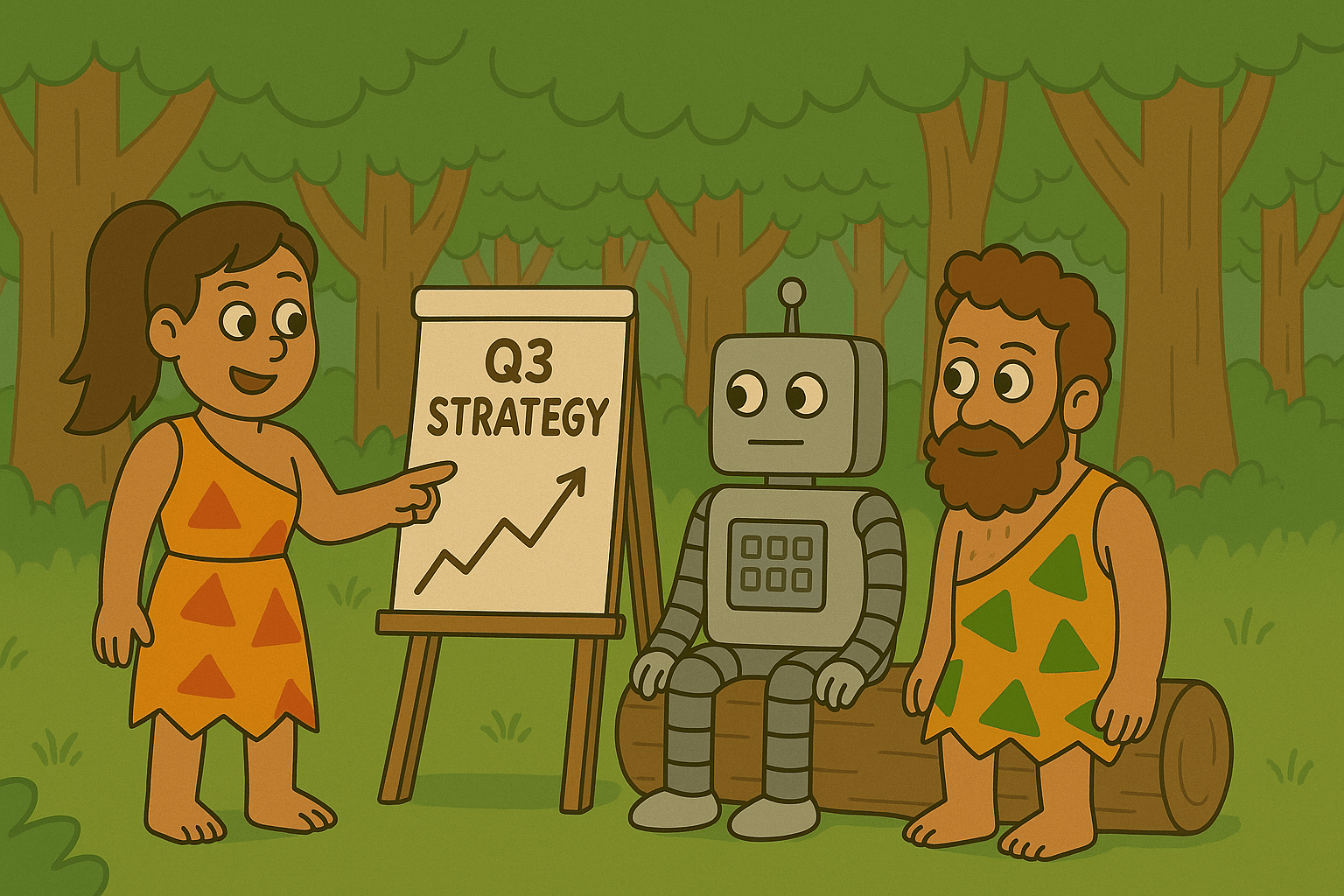
Your general purpose chatbots are already helping teams draft, research, and ideate. Opportunities unique to marketing centre around making better use of internal data, synthetically simulating your customers, and accounting for changing consumer behaviour. Taking those in turn...
Briefing
Every campaign and task starts with a brief. Yet, most briefs are pretty bad. The average client estimates they're wasting a third of their budget on bad briefs and misdirected work. AI tools like Briefly are combining a company's data (like their brand guidelines, past campaign performance, and audience research) with briefing best practices to guide marketers to better briefs in a fraction of the time. So, they get to better work, faster.
Share of Model
People are increasingly turning to AI chatbots for Search. At Briefly, 10% of our traffic comes from ChatGPT. So, understanding what these chatbots are saying about you is an increasingly important part of your SEO strategy. Large agencies like Jellyfish are already building out tools to help brands stay on top of this. That said, if the Google index was a black box, AI SEO is a black box in a black box. Beware of anyone telling you they know how to improve your position (beyond following the same SEO best practices that have been around for years).
Prediction & Pre-testing
Testing agencies allow marketers to see what people make of their ads before they reach the market. The drawbacks of pre-testing have always been that it's expensive and time-consuming.
AI offers an instant, near-infinite pre-testing environment that can approximate the results of a real-world test. Synthetic personas of your target audience can react to whatever you put in front of them, simulating a focus group. This means you can test earlier and more often than was ever feasible previously. The drawback here is that you're not testing the idea or ad with real people and we don't yet know just how closely these synthetic tests match real-world results (and how much the remaining gap matters). For now, a comprehensive pre-testing strategy will likely combine AI and human pre-testing.
Production

Production has been, by far, the most fertile ground for early AI adoption. It makes sense: producers have always been asked how they can make more stuff with less. And generative AI happens to be pretty good at, well, generating stuff.
Progress has broadly followed media format:
Early tools: Written content
- SEO, Blog Posts, Social Copy
Current tools: Static visual content
- Image generation for product shots, actors, and backgrounds
Emerging tools: Motion content
- End-to-end generative video content with consistent product shots and actors
You could also throw AI voice into the mix. Near zero-latency speech means live conversations with customers is now possible. And increasingly realistic voices (and voice cloning) offer new possibilities for VO and audio content.
Early models struggled with things like hands and written text. Newer models are much better at this. They're also increasingly good at object permanence like having the same character from scene to scene.
Over the coming months, static visual content will become a solved problem. That's to say, you'll be able to create near enough any visual you like and, importantly, any series of consistent visuals that you like. This means you'll be able to:
- Place real product shots in different locations with different 'human' models
- Create catalogue content based on sketches, computer renders, or low-quality snapshots of products
- Create infinitely 'personalised' variants of hero assets
You can expect a similar trajectory for generative video. Current models struggle with real-world physics: legs tangle with themselves, reflections don't match the scene, and the uncanny valley is yet to be crossed. In the coming years, expect to see more and more video content that looks like it was shot with a real camera.
You can already see this progress by referencing the universally-accepted Will-Smith-eating-spaghetti standard...
2023:
2025:
Making edits to original footage in post-production without the need for CGI or painful rotoscoping, supplementing existing footage with AI-generated cutaways, and creating personalised brand experiences for individual customers are all just about viable use-cases today.
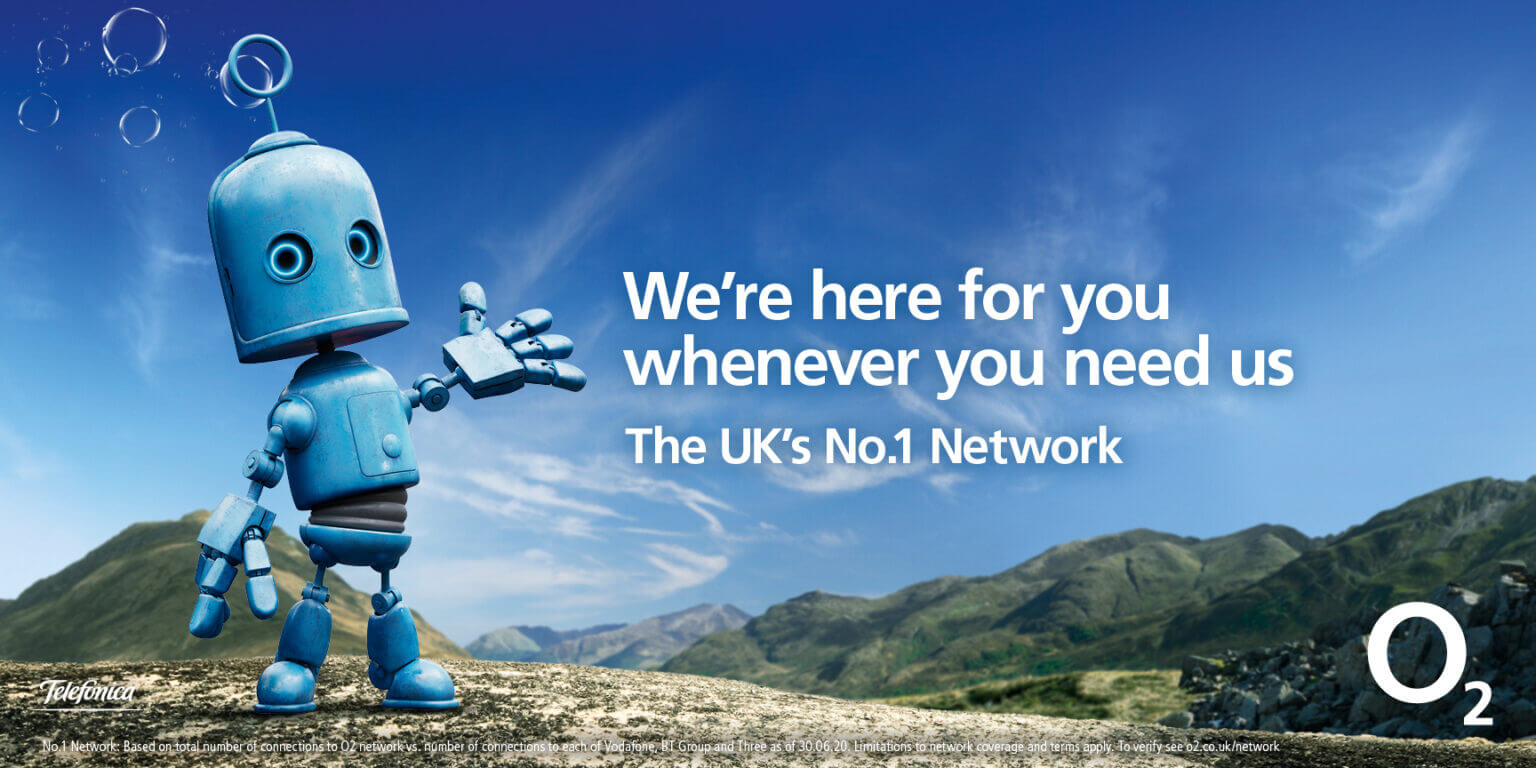
Moreover, AI tooling in production tends to be pretty tightly scoped. There's a proliferation of tools that are good at doing one thing well. So, a "strategy" here doesn't need to extend massively beyond telling your team to "go and try stuff". The team on the ground will be best placed to identify gaps in their capabilities and opportunities to move faster with AI.
Beyond creating a permission structure, locking down processes and policies around data, compliance, and business-casing will help teams navigate identifying, justifying and onboarding new tools. More on that in a moment.
Managing your own assets with AI
There's a decent chance that your organisation will use a DAM (Digital Asset Management) system to store your assets. We've seen lots of clients use AI to help manage those assets via their DAMs, and even use AI to modify assets, create variants, and serve those assets to relevant platforms.
Often, it's the DAM providers that are offering these capabilities, meaning you get a lot of the benefits of an AI-powered DAM without the need to buy a new system. Leading DAMs that are currently available are already tagging your assets with richer metadata, organising assets by context and usage rights, and suggesting the best creative for a given audience or channel.
The benefits are clear: faster campaign turnarounds, better brand consistency, and more value from every piece of content you've invested in.
Delivery

AI has also long played a role in media planning and buying. As algorithms have grown more sophisticated, platforms like Meta and Google have become more and more like black boxes - select your goal, maybe select an audience, set a budget, and then hand over the keys.
At the same time, Generative AI has yet to meaningfully change how we buy media and deliver content. Use cases here are more speculative and distant versus strategy, planning and production.
That said, here are two use-cases that are starting to emerge.
Personalisation
We see personalisation at scale already taking root in the B2B space. Sales teams currently spend an enormous amount of time 'personalising' content for individual leads. This often just involves selecting the deck that's made for the customer's industry, and perhaps adding an obvious detail here and there. Expect to see much of this work automated within the next year.
Beyond that though, combining AI's ability to research leads with its ability to write (or generate content) and you can start to run new playbooks. For instance, each lead can be directed to a bespoke landing page, or perhaps have a personalised video from your (AI avatar) salesperson.
The effectiveness of these approaches are unproven, and there are clearly safety risks to be considered. But at the very least moving B2B teams away from "Hey {{First Name}}" spam sorry, outreach, must be a good thing.
Agentic Campaign Management
As agents get better at reasoning and using multiple tools, we might start to see AI taking on the role of a junior campaign manager paired with a designer. The system might notice that a particular asset is performing well, and then create new variants of it to test in market. While a human in the loop would likely still be required to release the campaign, these systems could be used to test more ideas and monitor more signals than previously possible.
Common headaches
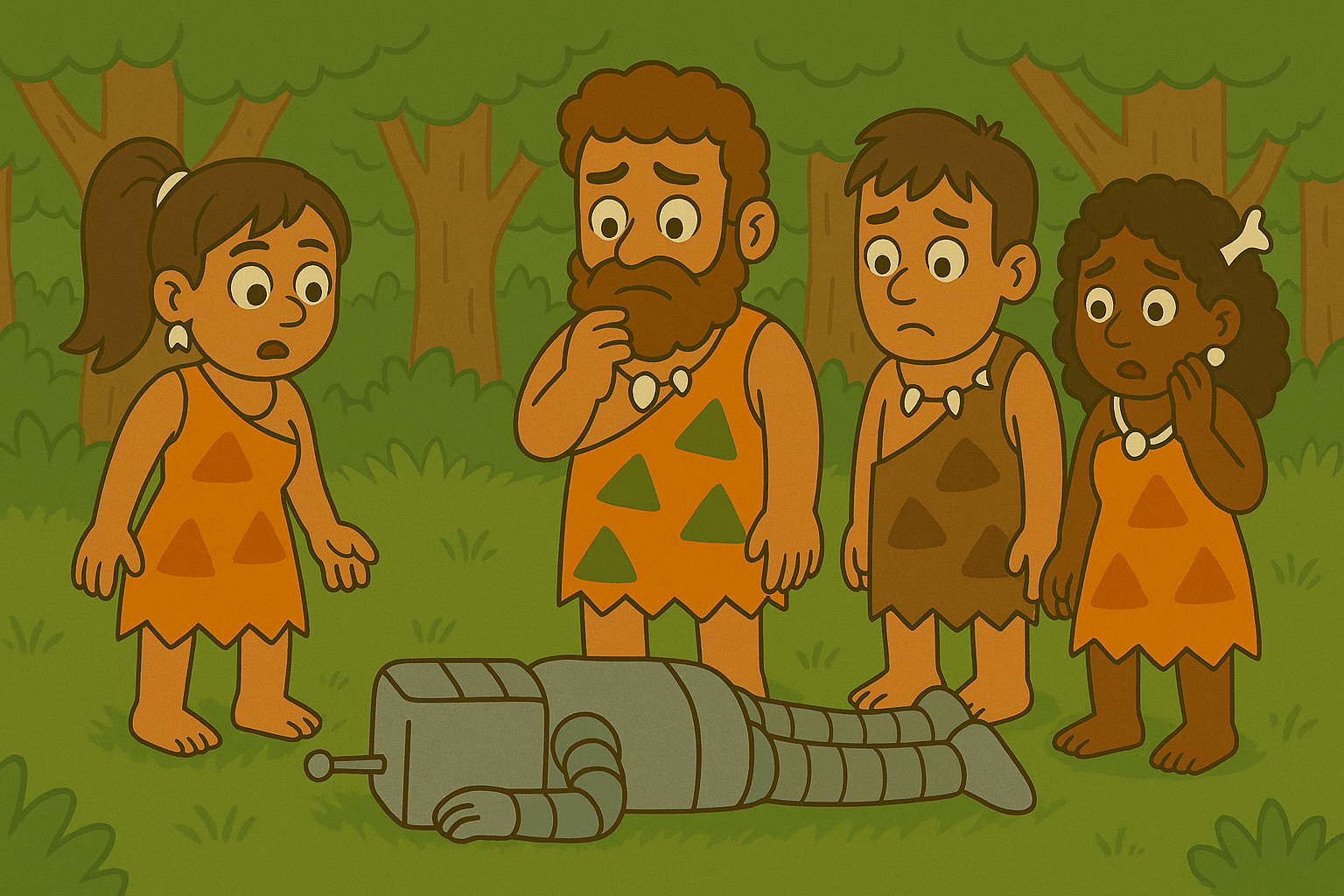
Pilot and scale
A symptom of AI vertigo is the paralysis of choice. There are so many tools, so many models, so many ways to do things. Add to that the musings of your legal team, your very expensive consultants, and an understaffed IT team, and you've got a recipe for strategy paralysis.
Speaking to Fortune 500 companies, we've found, by far, the most successful approach to AI adoption is clearly defined, tightly scoped, and KPI'd pilots. Their approach goes something like this:
- Establish a set of basic AI policies with your legal and compliance teams and make these available to your team.
- Draw up a list of use-cases (and empower the team on the ground to identify their own opportunities), then
- Prioritise the top 3/5/10 use-cases to test that Quarter
- Assign a budget and responsible person to each use-case
- Identify the tools you need to use, and the data you need to share (some solutions might be able to be be built in-house, others will require a supplier)
- If needed, onboard the supplier with a water-tight (and ideally standardised) Data Processing Agreement
- Set clear KPIs for the pilot with a time-bound deadline
- Kick off and measure the results
- Review progress and decide whether to scale or pivot
- Rinse and repeat
Connecting your data
Model Context Protocol (MCP) is an emerging standard which is setting out to solve the problem of how to pass data (or context) between AI tools. What you want to avoid is having to duplicate data in multiple places. You probably don't need to worry about whether MCP or another standard wins out - most of the major storage providers are already working on integrations and solutions for sharing data access with AIs.
We'd also argue that you don't really need to worry all that much about the data duplication problem. Not because it isn't a problem, or won't ever be a headache down the line, but because for now, a bit of manual duplication isn't the end of the world, especially when you're still figuring out which tools you want to use.
IT teams and consultants have a habit of over-engineering solutions in this space. We'd recommend spinning up a pilot, securing a water-tight Data Processing Agreement from the supplier, and then, if needed, doing a bit of manual duplication to test whether the tool actually works. If it does, great. You can now worry about how to scale this - either with a data warehouse/platform, an integration between suppliers, or something new.
Where next
The technological trends are clear: models will become better, faster and cheaper. That means using more AI in more places is inevitable.
As that happens, a new 'default' marketing ecosystem will start to develop. And don't expect all the leaders of yesterday to still be leading tomorrow.
It's impossible to predict the pace of progress and, as a CMO, don't worry too much about living in the future. Instead, empower your people to use tools today with clear standards, processes and KPIs, then largely get out their way. As winning tools emerge, work closely with suppliers and your technical teams to knit solutions together.
Finally, consider where you don't plan to use AI. Dove, a beauty brand, have already drawn the line at never using AI imagery in their ads. Which kind of makes sense given the whole "Real Beauty" thing! In a world where AI starts to become the default, think about what opportunities, touchpoints or attributes your brand has that makes human connection or creativity innately valuable.
And if you do all that, you might just be left with an AI-native marketing function that (a) actually works, and (b) didn't require you to personally predict every winning tool and technology in an emerging market years in advance. If the Board still asks you to that, I don't know, maybe just ask ChatGPT.
Further reading
I'm often asked by marketers for a list of resources to help them understand AI. Here are four recommendations:
- For a technical introduction to Large Language Models, I'd recommend this breakdown by Stephen Wolfram.
- If you prefer videos, try this demo by Andrej Karpathy (co-founder of OpenAI).
- If you like podcasts, check out Dwarkesh Patel for a technical but accessible set of interviews with leaders in the field.
- Google keep a list of AI use cases from a variety of industries (funnily enough though, they do all use Gemini).


